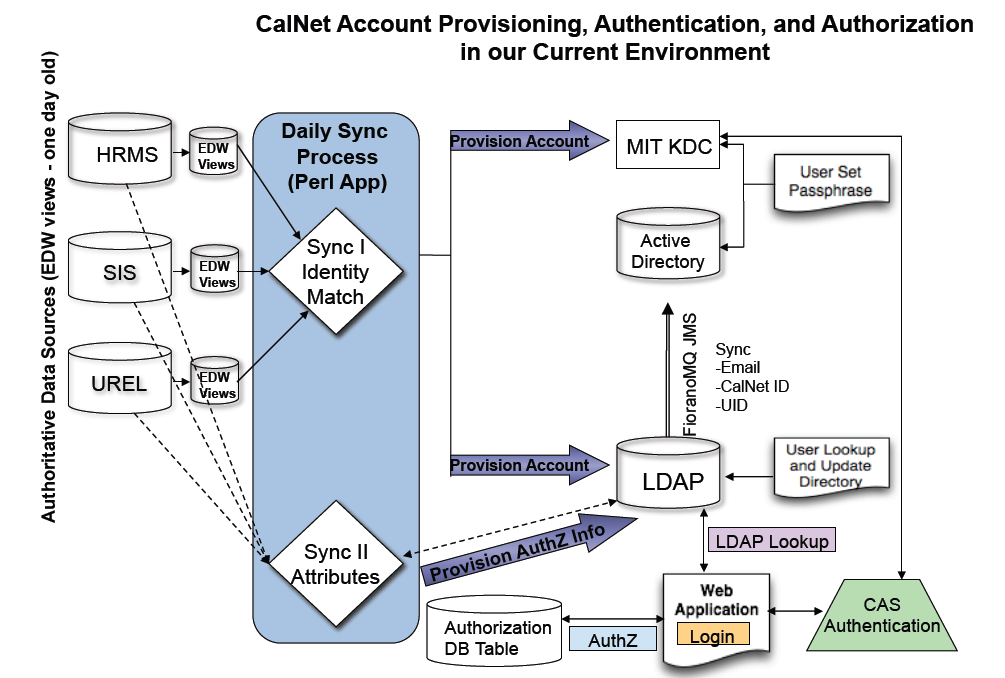Basic process
- PPS data fed to campus PeopleSoft intance (identified by "HRMS" in the diagram - you would need to talk to the PeopleSoft team about this integration)
- PeopleSoft dumps data nightly to Enterprise Data (ED) Warehouse (you would need to talk to the ED team about this integration).
- Campus IAM team accesses view of HR data from Data Warehouse
- IAM team runs a "sync process" every morning that has three steps:
- Pulls data for ID matching into memory and conduct an ID match/reconciliation against other Systems of Record
- If new record, provision a new LDAP UID (also provision new MIT Kerberos record for new staff)
- Pull additional HR data to build new LDAP record or modify existing record
Problems with Current System
- PPS to HRMS integration is not real-time
- HRMS to EDW integration is not real-time
- Because of preceding, there is no ability to receive HR data in real-time using current interfaces
- Sync process is run on legacy code
- Team is in the process of designing IAM framework that includes an updated Person Data Model including a transactional DB for person data (at present, LDAP serves as the primary repository for campus-accessible transaction-based person data)
- User confusion around updating profile data: Multiple units on campus allow individuals to update their basic profile data (address, phone, etc) creation confusion about where to go. Some profile updates are allowed in PS HCM, but not all. (Please note: A campus-wide Steering Committee just endorsed a new plan that calls for a campus-wide "identity portal" where main updates to person data can take place and get pushed in realtime to other apps that wish to integrate)
Rough Diagram of Current Design

Thoughts on Future Design
- Would like to move to realtime updates
- Would like a rational approach to self-service profile data updates
- Would like to design a campus-wide person data model and repository with standard interfaces that can be used to provision user data to campus and cloud-based apps and for a variety of realtime queries (LDAP, WS, message-based, etc)
{"serverDuration": 130, "requestCorrelationId": "49b2dec33e78af13"}
